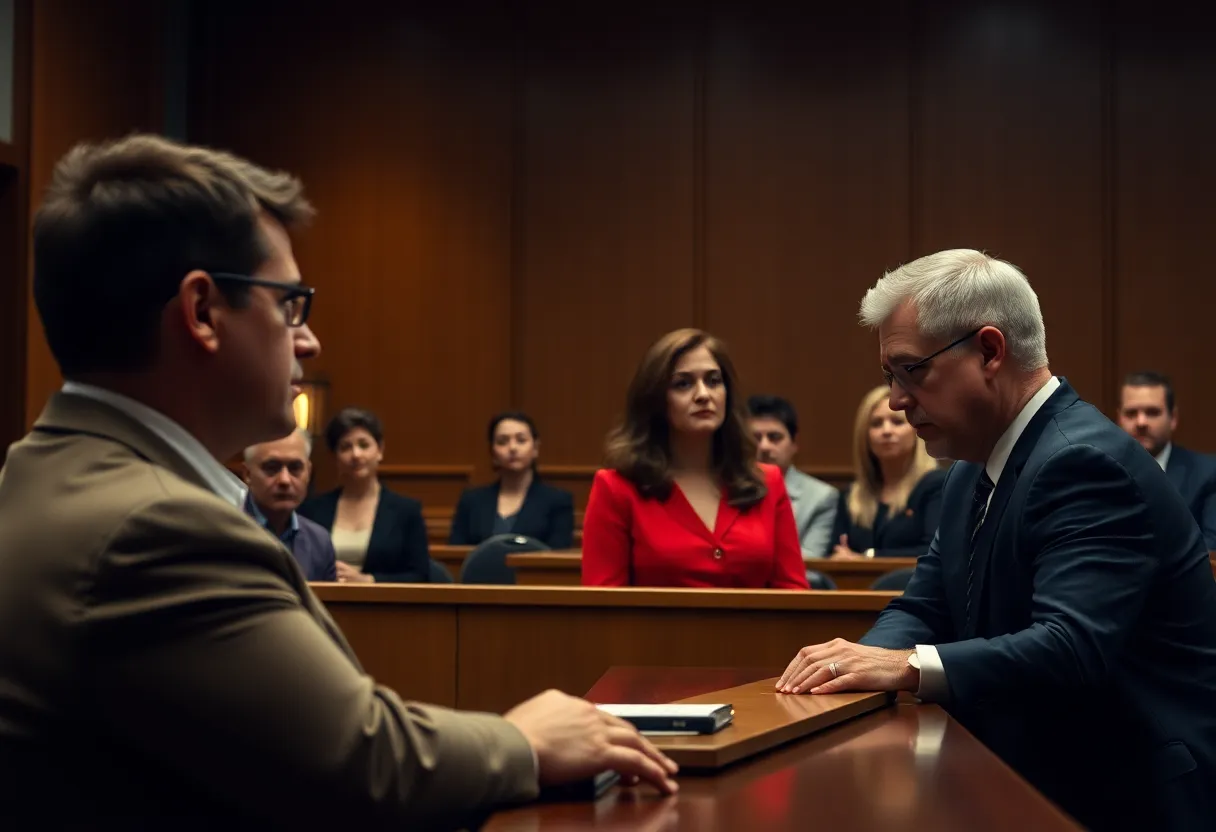Buffalo, NY, October 7, 2025
A retrial in the decades-old 1993 murder case in Buffalo concluded with a deadlocked jury on October 7, leaving the investigation unresolved. This outcome highlights the continuing challenges in prosecuting cold cases and its impact on local justice businesses. Despite revisiting key evidence, the jury’s inability to reach a verdict poses further delays for the victim’s family and the community, as prosecutors consider their next steps for legal action.
Buffalo, NY: Retrial in 1993 Murder Case Ends with Deadlocked Jury
Buffalo’s legal community faces a setback as a retrial in a decades-old 1993 murder case concluded on October 7, 2025, with a deadlocked jury, leaving the high-profile investigation unresolved once again. The outcome highlights ongoing struggles in cold case prosecutions and their ripple effects on local justice-related businesses.
The proceedings revisited key evidence from the unsolved killing, which has captured public interest over the years. Despite efforts to present fresh perspectives, the jury could not reach a unanimous verdict, resulting in a mistrial. This development means the case remains open, with prosecutors now weighing options for further legal action, such as appeals or another attempt at trial.
Local courts and law enforcement had invested significant resources into this retrial, hoping to deliver closure to the victim’s family and the community. The deadlock underscores the challenges in resolving cold cases, where time erodes witness memories and evidence degrades. For businesses tied to the justice system—such as legal firms, private investigators, and court support services—this stalemate could prolong uncertainty and affect workloads.
Impact on Local Justice Businesses
The unresolved status of the case has broader implications for Buffalo’s justice sector. Law firms specializing in criminal defense and prosecution often see spikes in activity during high-stakes retrials like this one. A deadlocked jury can lead to extended engagements, increasing billing hours but also delaying resolutions that clients and firms alike seek. Similarly, forensic consulting firms and document services may face fluctuating demands as evidence reviews continue.
In Western New York, where cold cases like this one draw national scrutiny, the tourism aspect of true crime stories indirectly supports local economies. Podcasts, books, and media coverage generate interest, boosting visits to related sites or museums. However, repeated failures to close such cases can erode public trust, potentially impacting funding for district attorneys’ offices and related enterprises.
Challenges in Cold Case Resolutions
Prosecuting cold cases presents unique hurdles. Evidence from 1993 relies on preserved materials that may not hold up under modern scrutiny. Witnesses, now much older, might provide inconsistent accounts, complicating jury deliberations. In this instance, the retrial aimed to address these issues by incorporating advanced forensic techniques unavailable three decades ago, yet the jury’s impasse shows how difficult consensus can be.
The national attention on this Buffalo case amplifies the pressure on local authorities. Similar unresolved murders across the U.S. face analogous problems, with clearance rates for homicides dropping in recent years. This trend affects not just individual communities but also the businesses that support investigative efforts, from tech providers for DNA analysis to security firms aiding in evidence handling.
Background on the 1993 Case
The original incident in 1993 involved a murder that shocked Buffalo residents, sparking immediate investigations. Initial trials or hearings at the time failed to produce a conviction, leading to the case’s cold status until recent efforts revived it. Over the years, advancements in technology prompted a reevaluation, culminating in this 2025 retrial.
Community advocates have long called for justice, viewing the killing as emblematic of broader safety concerns in the area during that era. The deadlocked jury decision revives debates on judicial processes for historical crimes, potentially influencing how other cold cases are approached regionally.
Future Prospects and Legal Pathways
With the mistrial declared, prosecutors have indicated they may pursue additional appeals to challenge the outcome or gather new evidence for another trial. This could extend the legal battle into 2026, sustaining activity for involved parties. Defense teams, meanwhile, may seek to dismiss charges permanently, adding layers to the proceedings.
For Buffalo’s business landscape, the prolonged attention could mean sustained revenue for legal professionals but also highlights the need for efficient case management. As the city continues to grow its economy—evident in recent expansions like new restaurant openings and infrastructure projects—the justice system’s effectiveness remains a key factor in maintaining public confidence and economic stability.
This event also ties into wider discussions on criminal justice reform, where cold case backlogs strain resources. Businesses in ancillary fields, such as legal publishing and training seminars, often capitalize on these topics, offering solutions to improve resolution rates. While the immediate impact is local, the case’s profile ensures it contributes to national conversations on accountability and closure.
In summary, the deadlocked jury in this 1993 Buffalo murder retrial marks a pivotal moment, emphasizing the enduring difficulties in achieving justice for past crimes. As stakeholders navigate next steps, the outcome will likely shape strategies for similar cases, affecting both community trust and the vitality of justice-oriented businesses in the region.
FAQ
What happened in the 1993 Buffalo murder case retrial?
A retrial in the 1993 Buffalo murder case ended in a deadlocked jury on October 7, 2025.
Why is this case considered high-profile?
The high-profile proceeding revisited evidence in the unsolved killing, drawing national attention.
What are the next steps for prosecutors?
Prosecutors may pursue further appeals, underscoring ongoing challenges in cold case resolutions and their impact on local justice businesses.
How does this affect local businesses?
The deadlock underscores ongoing challenges in cold case resolutions and their impact on local justice businesses.
Key Features Chart: Elements of the 1993 Buffalo Murder Case Retrial
| Feature | Description |
|---|---|
| Date of Outcome | October 7, 2025 |
| Jury Result | Deadlocked |
| Case Origin | 1993 unsolved killing in Buffalo |
| Key Focus | Revisiting evidence with national attention |
| Implications | Ongoing challenges in cold case resolutions impacting local justice businesses |




